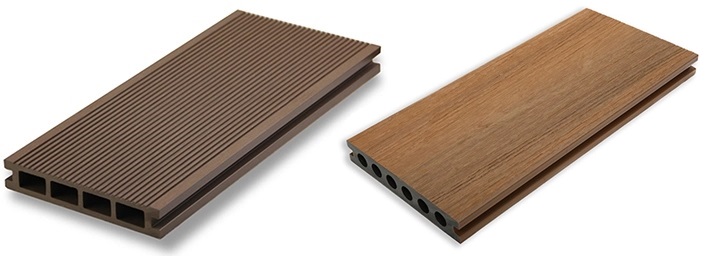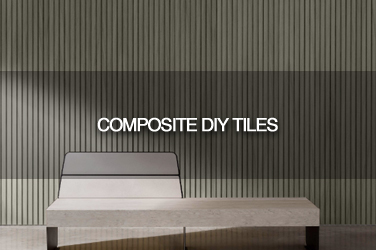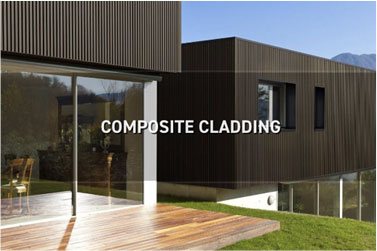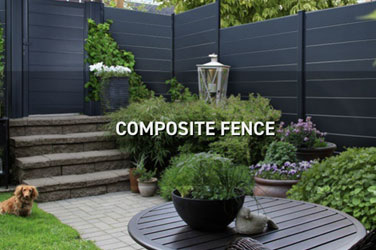With the development of wood-plastic flooring, it has gradually evolved from solid decking to round-hole flooring and then to square-hole flooring. When choosing wood-plastic flooring, you may be puzzled about whether to choose hollow WPC timber decking or solid decking. Due to the many options available with the development of wood-plastic flooring, owners are often confused and don't know where to start. So, how should you choose? Let's take a closer look at the differences between hollow and solid WPC timber decking.
Differences Between Solid and Hollow Decking
Compared to hollow wood-plastic flooring, solid decking has higher strength and greater load-bearing capacity. Additionally, the density of wood-plastic flooring is greater than that of ordinary wood, providing better weather resistance and durability in outdoor applications. It is suitable for use in courtyards and outdoor landscapes, especially in high-traffic areas such as outdoor parks, boardwalks, and plazas where solid decking is recommended.
Hollow decking, with its hollow core, has a compromised structure that reduces the thickness of the surface layer. This structure makes the surface easily damaged and prone to cracking, and the surface film layer may peel off, affecting the service life. Furthermore, since most outdoor areas have moisture, condensation forms inside the hollow spaces when exposed to sunlight, leading to rot and damage, reducing the service life and creating safety hazards.
Wall Thickness of the Usage Surface
Whether square-hole or round-hole wood-plastic flooring, the wall thickness of the usage surface should not be less than 4.5 millimeters. If the usage surface wall thickness is less than 4.5 millimeters, its load-bearing capacity is limited, posing safety risks.
End Sections
Good wood-plastic flooring should have smooth and flat end sections without clumping due to poor dispersion, obvious plastic white spots due to uneven melting of high molecular plastic, or pores caused by incomplete air removal. If you press a fingernail into the surface and no powder or small chunks fall off, then the wood-plastic flooring is of good quality. Otherwise, the quality is not up to standard.
Physical Performance Testing
Find two bricks or similar hard objects of the same height with smooth surfaces, placed 350 millimeters apart. Then place a piece of wood-plastic flooring longer than 400 millimeters on top. Stand on one foot in the middle of the flooring and shake your body for 2-3 minutes. If the flooring shows no change, it is qualified; otherwise, if the surface sags or cracks appear, it is unqualified.
If your budget allows, it is recommended to choose solid decking. Even a 20-millimeter thick solid WPC timber decking will have much higher bending strength and aging resistance than a 25-millimeter or 30-millimeter thick round-hole hollow decking.
WPC Timber Decking—Cross-Section Comparison
The original purpose of developing wood-plastic flooring was to address the issues of wood rotting and cracking easily, resulting in a short lifespan. The hollow decking was introduced to reduce costs. The following diagram compares the cross-sections of square-hole and round-hole flooring. From a physical mechanics perspective, although square-hole flooring is cheaper (using relatively less material), it is evident that the load-bearing capacity of square-hole flooring is much weaker.








